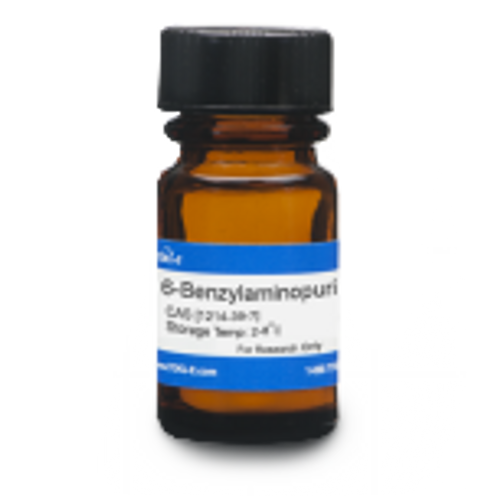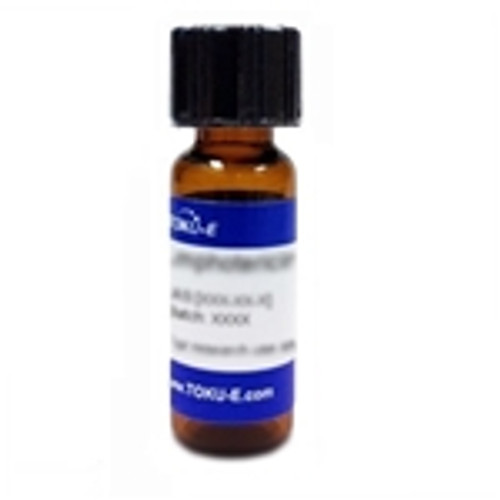6-Benzylaminopurine (BAP) is a first generation cytokinin plant growth regulator influencing plant growth and development. It is widely used as a supplement in plant growth media. It can inhibit respiratory kinase and increase post-harvest life. 6-Benzylaminipurine is sparingly soluble in water.
| Mechanism of Action | Cytokinins are involved in photosynthesis, nutrient assimilation, stress responses, and senescence. They are recognized by histidine kinases, and this signal triggers gene expression. |
| Plant Biology Applications | BAP is found primarily in plant roots and shoots where it induces gene expression involved in plant growth and development responses. It can induce premature flowering and increase the leaf and flower number in Dendrobium orchids (Nambiar et al. 2012). Somatic embryogenesis in wild rice (Oryza perennis) was induced from cultured mature seeds and young inflorescences. 6-Benzylaminopurine was used for induction of a compact callus and somatic embryos. Plant regeneration occurred on media containing BAP in combination with IAA and NAA (Wang et al, 1987). |
| References | Nambiar N, Siang TC and Mahmood M (2012) Effect of 6-Benzylaminopurine on flowering of a Dendrobium orchid. Australian Journal of Crop Science 6(2):225-231 Wang, MS, Zapata FJ and De Castro DC (1987) Plant regeneration through somatic embryogenesis from mature seed and young inflorescence of wild rice (Oryza perennis Moench). Plant Cell Rep. 6(4): 294-296 PMID 24248763 Werner T and Schmülling T (2009) Cytokinin action in plant development. Curr. Opin. Plant Biol. 12(5):527-538 PMID 19740698 |






